
Duration
21 Nights
Journey Type
Sailing from Romania
Ports
20 Ports
14 May
Setting sail from Bucharest
Once known as the 'Paris of the East', it's fair to say that modern Bucharest bears some pretty ugly architectural scars from the 22-year dictatorship of the late Nicolae Ceauşescu. Of all the concrete monstrosities bequeathed by Ceauşescu, the enormous Palace of Parliament is both the most grotesque and the most fascinating, a monument to one man's staggering vanity. Looks aren't everything though, and Romania's capital has emerged from the ashes of communism as a feisty, dynamic city with some lovely parks, interesting museums and a lively nightlife.


Don't miss
The Old Town will reveal to you some of Bucharest's pre-communist treasures.
15 May
Bulgaria: Ruse

The Bulgarian city of Ruse (also written ‘Rousse’) sits on the right bank of the Danube just opposite the Romanian city of Giurgiu, and is one of the country’s most attractive cities. Sometimes known as ‘Little Vienna’, thanks to the plethora of Neo-Baroque and Neo-Rococo architecture, it’s a highlight of any cruise along this stretch of the Danube.
16 May
Bulgaria: Vidin

The riverside town of Vidin is situated in the north west corner of Bulgaria, close to the border with Romania and Serbia. The architectural highlight is the magnificently well preserved Baba Vida fortress, and the town is also home to a mosque, a synagogue and several churches.
17 May
Serbia: Golubac
18 May
Serbia: Belgrade

Belgrade has been invaded and occupied dozens of times over the centuries, a fact that's reflected in the mish-mash of architectural styles, from Ottoman and Art Nouveau to grim relics of the communist era. But Belgrade is also a city with real soul, emerging from a difficult recent history as one of Europe’s most exciting capitals.
19 May
Croatia: Osijek

Osijek is the capital of Slavonia, a region of eastern Croatia that is hemmed in on three sides by Hungary, Serbia and Bosnia. Tourists are thin on the ground compared to the Dalmatian Coast, yet Osijek is an elegant and cosmopolitan city surrounded by beautiful countryside.
20 May
Hungary: Kalocsa

Kalocsa is known for its paprika, the ‘red gold’, used to flavour Hungary’s national dish, goulash. Look out for garlands of paprika hanging from the walls of local houses. The town is also famous for its beautiful embroidery, and excursions may take you out into the grassy steppe of the Puszta region.
21-22 May
Hungary: Budapest

Budapest is one of Eastern Europe’s most appealing cities, a vibrant and welcoming capital that straddles the Danube. The history of Budapest has been somewhat turbulent, but plenty of beautiful buildings survive, including the imposing Parliament and iconic St Stephen’s Basilica.
23-24 May
Austria: Vienna
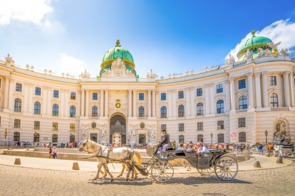
Formerly the centre of the Habsburg Empire, Vienna is as grand a European capital as you can imagine, jam packed full of thrusting, bombastic buildings that stand as a reminder of Austria’s glorious imperial heyday.
25 May
Austria: Melk

The riverside village of Melk is best known for its spectacular abbey, a Baroque masterpiece that dominates the landscape. A Benedictine abbey was first established here in 1089, and the 18th century reconstruction that you can see today is still a working monastery.
26 May
Germany: Passau

The pretty Bavarian town of Passau, situated close to Germany’s border with Austria, enjoys a unique setting at the confluence of three rivers: the Inn, the Ilz and the Danube. The narrow cobbled streets of the handsome old town, the Altstadt, are quite delightful.
27 May
Germany: Regensburg

Originally founded by the Celts and later an important Roman settlement, Regensburg is one of Bavaria’s lesser known gems. Situated on the northernmost bend of the Danube, it’s a friendly and laid back city, with an exceptionally well preserved medieval centre.
28 May
Germany: Nuremberg

Nuremberg, Bavaria’s second city, first pops up in the history books in 1050 as a stronghold of the Franks, and later became the unofficial capital of the Holy Roman Empire. Nowadays the city is a tourist magnet thanks to the beautifully restored old town, Christmas markets and excellent beer.
29 May
Germany: Bamberg

Bamberg’s eye-catching, UNESCO-listed old town is one of the most beautiful in all of Germany. The city was briefly capital of the Holy Roman Empire, and the city centre is still dominated by the 13th century cathedral. There are also plenty of breweries, and you shouldn’t leave without trying Bamberg’s famous smoked beer.
30 May
Germany: Würzburg
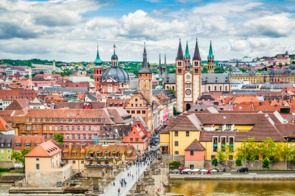
The handsome town of Würzburg, situated on the river Main between Nuremberg and Frankfurt, was ruled for centuries by a succession of powerful prince-bishops. Although much of the city was destroyed during the Second World War, the majestic 18th century Residenz palace stands as a testament to the wealth of the bishopric.
31 May
Germany: Wertheim

The picturesque medieval town of Wertheim sits at the confluence of the Main and Tauber rivers, and is known for its castle, cobbled streets and charming half-timbered houses. The surrounding countryside is perfect for a bike ride, a gentle hike or a wine tasting tour.
1 June
Germany: Koblenz

Koblenz was founded by the Romans, who valued the city’s strategically important location where the Rhine and Moselle rivers meet. Rebuilt from the rubble of the Second World War, modern Koblenz has a pleasant and relaxed atmosphere, and serves as a gateway to the Romantic Rhine.
2 June
Germany: Cologne

Cologne is a wonderfully warm and welcoming city, its skyline dominated by one of the most beautiful Gothic cathedrals in Europe. You will likely spend most of your time in the attractive Altstadt (Old Town), home to beer halls aplenty and some fascinating museums.
3 June
Netherlands: Kinderdijk

Situated just to the north of Dordrecht, the UNESCO-listed Kinderdijk is one of the most photographed locations in the Netherlands. This is a quintessentially Dutch landscape of canals, marshes and 19 beautiful windmills that were built to protect the land from flooding.
4 June
Arriving in Amsterdam
Amsterdam is one of our very favourite cities to visit, as well as also being a perfect base to explore the nearby landscape of windmills and dikes. The Amsterdam canal belt is now officially recognized as a UNESCO World Heritage site, and from them there are so many neighbourhoods to explore, such as the Jordaan with its higgledy-piggledy streets and its famed garden courtyards (hofjes). There are also a wealth of famous museums and galleries to choose from, such as the Van Gogh Museum, the Rijksmuseum and the Anne Frank House, not to mention some more, shall we say, quirky options.

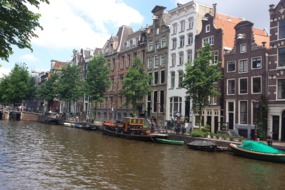
Don't miss
The quaint cobbled streets that straddle Amsterdam’s grandest canals, known as De Negen Straatjes, are awash with history and contain some of the most unique shops in the city.
Your home from home

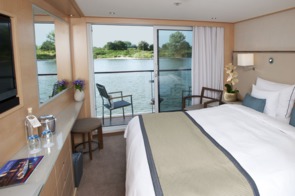
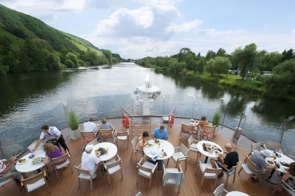
What we love
Viking Longships have led the way in the expansion of the river cruise industry. With understated interiors, comfortable staterooms and suites, a great main restaurant and excellent terrace offering a lovely spot for a casual meal al fresco, they operate on Viking's most popular itineraries and consistently deliver to Viking's ever increasing clientele.
| Capacity | 190 Guests |
|---|---|
| Crew | 45 Staff |
| Style | Understated, elegant on board environment where you can relax after an enriching day of sightseeing. |
| Inclusions |
|
| Length | 443 feet |
Tailor-make your trip

Extend your stay in Bucharest
Stay in grand style at the JW Marriott – an imposing palace!

Explore Romania
Bucharest is the jumping off point for Transylvania and a gothic castle extravaganza.
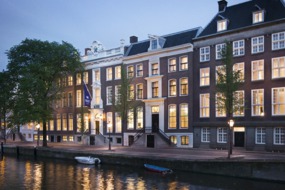
Two nights in Amsterdam
There is a fantastic range of canal front hotels to choose from, but we love the new Waldorf Astoria.
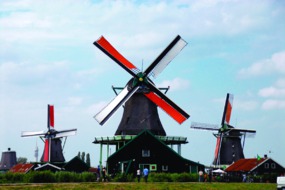
Around Amsterdam
Visit windmills in Zaanse Schans, the flowers at Keukenhof, or the cheese market in Alkmaar.











